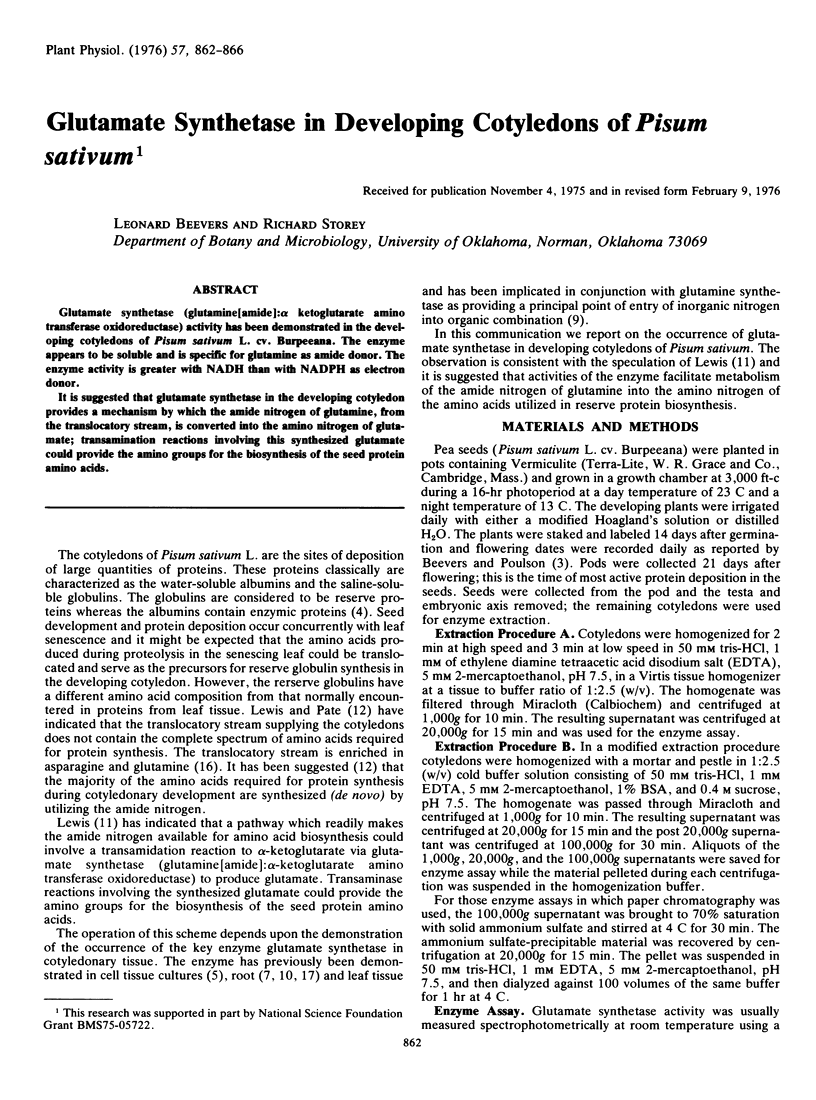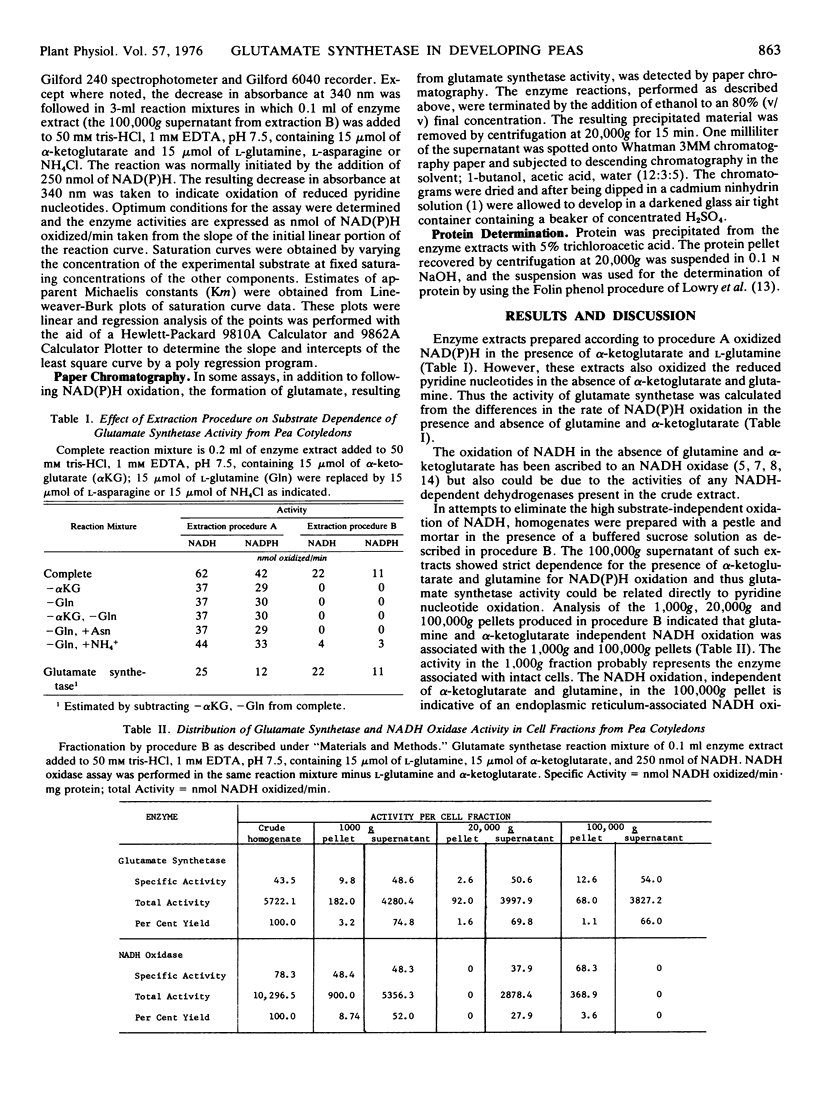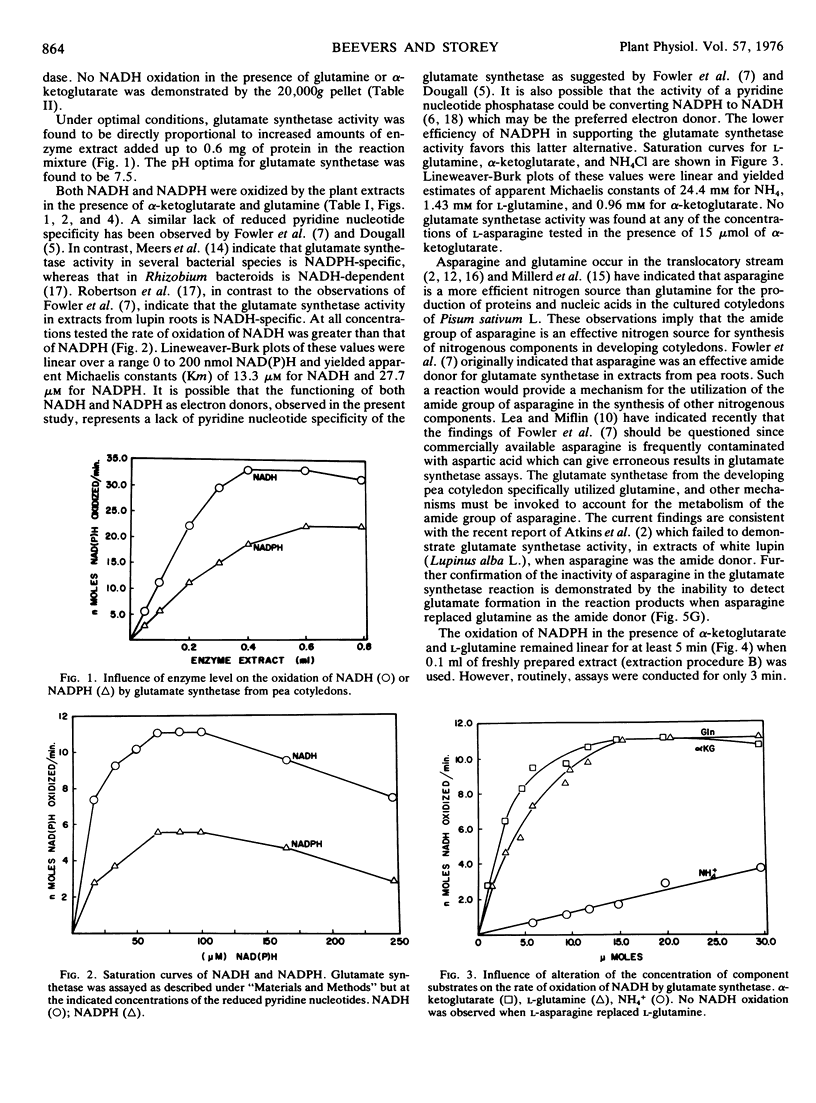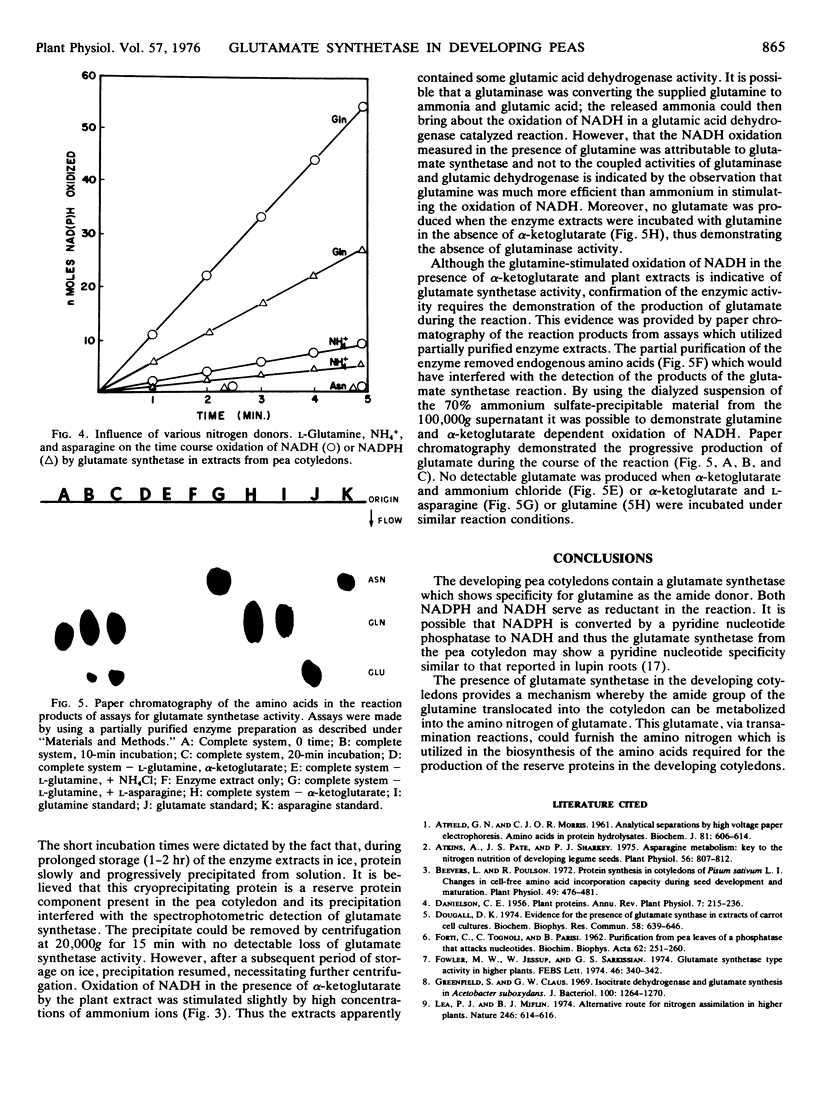Abstract
Glutamate synthetase (glutamine[amide]:α ketoglutarate amino transferase oxidoreductase) activity has been demonstrated in the developing cotyledons of Pisum sativum L. cv. Burpeeana. The enzyme appears to be soluble and is specific for glutamine as amide donor. The enzyme activity is greater with NADH than with NADPH as electron donor.
It is suggested that glutamate synthetase in the developing cotyledon provides a mechanism by which the amide nitrogen of glutamine, from the translocatory stream, is converted into the amino nitrogen of glutamate; transamination reactions involving this synthesized glutamate could provide the amino groups for the biosynthesis of the seed protein amino acids.
Full text
PDF




Selected References
These references are in PubMed. This may not be the complete list of references from this article.
- ATFIELD G. N., MORRIS C. J. Analytical separations by highvoltage paper electrophoresis. Amino acids in protein hydrolysates. Biochem J. 1961 Dec;81:606–614. doi: 10.1042/bj0810606. [DOI] [PMC free article] [PubMed] [Google Scholar]
- Atkins C. A., Pate J. S., Sharkey P. J. Asparagine metabolism-key to the nitrogen nutrition of developing legume seeds. Plant Physiol. 1975 Dec;56(6):807–812. doi: 10.1104/pp.56.6.807. [DOI] [PMC free article] [PubMed] [Google Scholar]
- Beevers L., Poulson R. Protein Synthesis in Cotyledons of Pisum sativum L: I. Changes in Cell-Free Amino Acid Incorporation Capacity during Seed Development and Maturation. Plant Physiol. 1972 Apr;49(4):476–481. doi: 10.1104/pp.49.4.476. [DOI] [PMC free article] [PubMed] [Google Scholar]
- Dougall D. K. Evidence for the presence of glutamate synthase in extracts of carrot cell cultures. Biochem Biophys Res Commun. 1974 Jun 4;58(3):639–646. doi: 10.1016/s0006-291x(74)80466-3. [DOI] [PubMed] [Google Scholar]
- Fowler M. W., Jessup W., Sarkissian G. S. Glutamate synthetase type activity in higher plants. FEBS Lett. 1974 Sep 15;46(1):340–342. doi: 10.1016/0014-5793(74)80401-1. [DOI] [PubMed] [Google Scholar]
- Greenfield S., Claus G. W. Isocitrate dehydrogenase and glutamate synthesis in Acetobacter suboxydans. J Bacteriol. 1969 Dec;100(3):1264–1270. doi: 10.1128/jb.100.3.1264-1270.1969. [DOI] [PMC free article] [PubMed] [Google Scholar]
- LOWRY O. H., ROSEBROUGH N. J., FARR A. L., RANDALL R. J. Protein measurement with the Folin phenol reagent. J Biol Chem. 1951 Nov;193(1):265–275. [PubMed] [Google Scholar]
- Lea P. J., Miflin B. J. Alternative route for nitrogen assimilation in higher plants. Nature. 1974 Oct 18;251(5476):614–616. doi: 10.1038/251614a0. [DOI] [PubMed] [Google Scholar]
- Miflin B. J., Lea P. J. Glutamine and asparagine as nitrogen donors for reductant-dependent glutamate synthesis in pea roots. Biochem J. 1975 Aug;149(2):403–409. doi: 10.1042/bj1490403. [DOI] [PMC free article] [PubMed] [Google Scholar]
- Robertson J. G., Warburton M. P., Farnden K. J. Induction of glutamate synthase during nodule development in lupin. FEBS Lett. 1975 Jul 15;55(1):33–37. doi: 10.1016/0014-5793(75)80950-1. [DOI] [PubMed] [Google Scholar]
- Wells G. N., Hageman R. H. Specificity for nicotinamide adenine dinucleotide by nitrate reductase from leaves. Plant Physiol. 1974 Aug;54(2):136–141. doi: 10.1104/pp.54.2.136. [DOI] [PMC free article] [PubMed] [Google Scholar]


